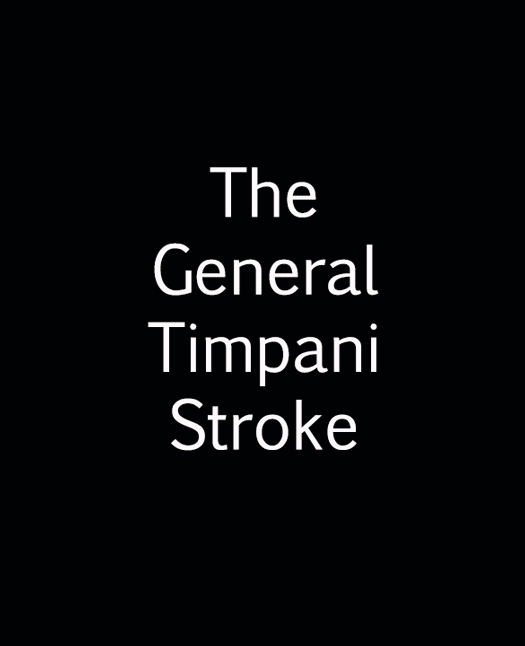The Most General Description of The General Timpani Stroke - Generally Speaking
The general timpani stroke – seems simple enough to explain but is littered with complications. Meaning, there are umpteen thousand variations that one can insert to the stroke to add color, articulation, length, shorten etc., etc. to said note. To really do this topic justice, it should be a video…. which will be forthcoming soon by this author. But let’s start with this blog. In the end, if half of you can understand and put this concept into practice…. winner, winner, chicken dinner.
Let’s start with the basic concept of how to hit the drum correctly. Picture this…. you have a basketball in your hand. With your arm (either one), wrist and fingers, you propel the ball straight down to the ground and then have your fingers, wrist and arm “catch” the ball after it has rebounded from the ground.
The basketball analogy is the best analogy for describing how the mallet head should propel down to the timpani head and then return to its starting position.
The problem that most people have, is making the correlation between the ball, meaning the basketball, and the timpani stick. With the basketball, that thing actually leaves your hand…. it’s gone…. see ya, wouldn’t want t’be ya. Then, if you’ve got a flat ground, the ball is not lopsided, and its pumped up just right, it’ll go straight down then return right back to your hand where you left it. Important to realize that if you propel the ball down with the correct sequence of arm, wrist, and fingers, the rebound of the ball will push your fingers, wrist, and arm back to its starting position. With the stick, you’re not throwing it out of your hand…well, maybe you are, but you’re gonna have some control issues. What you should be doing is pivoting the shaft of the stick so that the timpani mallet head is being thrown just like the basketball and you are catching the stick as it pushes your arm, wrist, and fingers back to its starting position. At one point in the throw, you are propelling and then at another point, you are following…. get it?
A couple complications might throw you off with this. First, not all strokes are created equal. Meaning, sometimes you are going to need to use much more arm than wrist or fingers. Other times more wrist than arm, or more fingers than wrist, etc., etc. What is important for you to grasp is the basketball analogy’s premise is constant with the timpani stick, regardless of what muscles you use to propel the stick.
Second, not all sticks are created equal. Different sticks can have completely different weight balances and rebound abilities. Here’s my number one concern with a timpani mallet…. Find a mallet that has the best distribution of weight at the mallet head, so it throws easily and then rebounds with the least amount of effort. You are going to get more articulation coupled with deep tone with less work…. In essence the stick does most of the work for you. I don’t like to toot my horn too often, but this is the one thing that my mallets do more effectively than most others, in my opinion.
There are quite a few other aspects that can come into play here, like wrist angle, grip technique, grip pressure, etc., etc. My advice…. get a teacher who really understands this stuff because you can only get so much by reading these blogs or watching videos. You need a “hands on” approach with one-on-one guidance to really master this stuff.
In the meantime, bounce the basketball around…. But not in the house! Mom always said, “don’t play ball in the house.”

